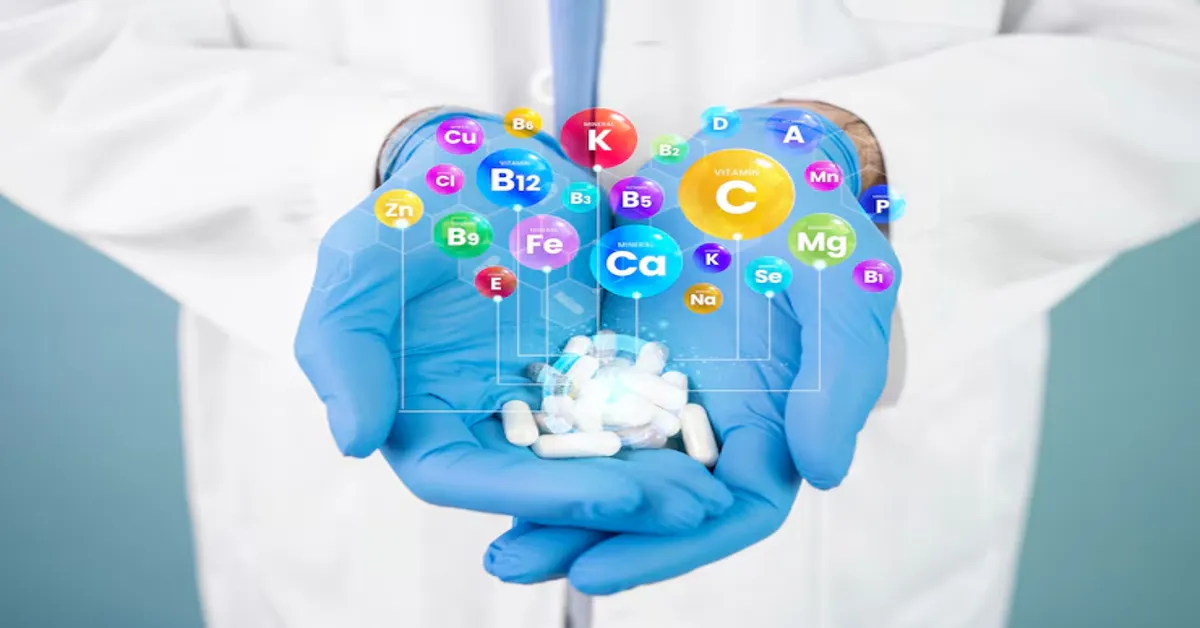In the universe of dietary supplements, few have seen the resurgence and scientific scrutiny of Vitamin D, the so-called “sunshine vitamin.” Once merely considered a guardian of bone health, Vitamin D has reemerged at the center of conversations around immune resilience, chronic illness prevention, and mood regulation. As knowledge deepens and testing becomes more routine, more individuals are prescribed high-dose supplements — notably Vitamin D tablets of 50,000 IU — a potency far above standard multivitamin levels.
While these high-potency tablets are medically approved and widely available by prescription, they are not casual supplements. Their use signals a targeted intervention into serious deficiencies or specific medical conditions. This article provides a thorough, evidence-based guide to Vitamin D 50,000 IU tablets, exploring what they are, why they’re used, who they’re for, and the precautions they demand.
The Role of Vitamin D in Human Health
Vitamin D is a fat-soluble secosteroid hormone, synthesized in the skin when exposed to ultraviolet B (UVB) rays from sunlight. It also occurs in certain foods and is often fortified in milk, cereal, and orange juice. However, the natural dietary sources are limited.
Vitamin D plays several critical roles:
- Calcium and phosphorus regulation
- Bone mineralization and maintenance
- Immune system modulation
- Muscle function
- Inflammation reduction
- Gene expression in more than 2,000 human genes
There are two primary forms:
- D2 (ergocalciferol) – plant-derived
- D3 (cholecalciferol) – synthesized in the skin and found in animal sources; also considered more bioavailable
What Are 50,000 IU Vitamin D Tablets?
A standard daily recommended dose for Vitamin D ranges from 600 to 800 IU for most adults, depending on age and health status. The 50,000 IU tablet is a therapeutic, high-dose form used under medical supervision to rapidly correct Vitamin D deficiency, or to maintain levels in individuals who cannot absorb or process it effectively.
These tablets are usually taken once weekly for a defined period, or biweekly/monthly depending on the treatment plan. They are not meant for casual or self-initiated supplementation.
Who Needs High-Dose Vitamin D?
1. Clinically Deficient Individuals
Vitamin D deficiency is diagnosed when serum 25(OH)D levels fall below 20 ng/mL (50 nmol/L). Common symptoms include:
- Fatigue
- Bone pain
- Frequent infections
- Muscle weakness or cramps
- Mood disorders, including depression
2. People with Malabsorption Disorders
Conditions like:
- Crohn’s disease
- Celiac disease
- Gastric bypass surgery
- Chronic pancreatitis
These interfere with the body’s ability to absorb fat-soluble vitamins like D, necessitating higher oral doses.
3. Older Adults and Homebound Individuals
Aging skin synthesizes less Vitamin D, and limited sun exposure further exacerbates the problem. In nursing homes, high-dose regimens are sometimes implemented to compensate.
4. Individuals with Obesity
Vitamin D is sequestered in adipose tissue, making it less bioavailable in those with high body fat percentages. Such individuals may require significantly higher doses to maintain optimal serum levels.
5. Patients with Osteoporosis or Secondary Hyperparathyroidism
These bone-related conditions often warrant Vitamin D correction to optimize calcium metabolism and prevent further skeletal degeneration.
When and How Is It Prescribed?
Doctors typically prescribe Vitamin D 50,000 IU tablets under these conditions:
- Severe deficiency: Weekly for 6–8 weeks
- Maintenance dose: Once every 2–4 weeks in chronic cases
- Post-surgical recovery: To assist in bone repair and immune function
The prescription often accompanies serum testing of 25-hydroxyvitamin D levels before and after the intervention. It may also be paired with calcium supplementation in cases involving bone loss.
Potential Benefits of 50,000 IU Dosing
1. Rapid Correction of Deficiency
Instead of months of low-dose supplementation, high-dose therapy quickly restores normal Vitamin D levels, especially in symptomatic patients.
2. Improved Bone Health
High-dose Vitamin D can help reverse osteomalacia (soft bones), reduce fracture risk, and improve bone mineral density, especially when paired with calcium.
3. Immune System Support
Research has suggested links between adequate Vitamin D levels and reduced risk of respiratory infections, including influenza and, more recently, potential mitigating effects in COVID-19.
4. Mood and Cognitive Support
Emerging studies connect Vitamin D deficiency with depression, anxiety, and cognitive decline. High-dose therapy in deficient individuals has been associated with mood improvements, though more data is needed.
5. Chronic Disease Prevention
There is ongoing research into Vitamin D’s role in autoimmune disease management, cardiovascular health, and glucose metabolism, but clinical guidelines remain cautious.
Risks and Precautions: The Double-Edged Sword
While beneficial in appropriate doses, Vitamin D is not without risk — particularly in megadoses like 50,000 IU.
1. Vitamin D Toxicity
Known as hypervitaminosis D, this condition is rare but serious. It leads to:
- Hypercalcemia (excess calcium in the blood)
- Kidney stones or damage
- Nausea, vomiting, poor appetite
- Confusion and arrhythmias
It usually results from chronic overuse, not short-term prescription therapy.
2. Overcorrection
Overshooting the target range (above 100 ng/mL) can cause the opposite of intended effects: calcium dysregulation, fatigue, and even bone pain.
3. Drug Interactions
High-dose Vitamin D may interact with:
- Steroids (which can reduce absorption)
- Thiazide diuretics (increasing risk of hypercalcemia)
- Anticonvulsants (which increase Vitamin D metabolism)
Physicians often screen for these before prescribing.
The Role of Monitoring
High-dose Vitamin D is not a set-it-and-forget-it intervention. It requires careful lab monitoring, especially if the tablets are being used over an extended period.
Typical lab schedule:
- Baseline 25(OH)D level
- Follow-up at 8–12 weeks
- Calcium and parathyroid hormone (PTH) levels
- Kidney function tests if long-term use is needed
Misuse and Over-the-Counter Availability
While the 50,000 IU tablet is often prescription-only, it is available over-the-counter in some countries or via online retailers. This opens the door to self-diagnosis and misuse, which can be dangerous.
Some individuals take high doses for perceived boosts in immunity or energy without proper testing — a practice discouraged by medical experts.
Special Considerations by Population
Pregnant and Breastfeeding Women
Vitamin D is essential during pregnancy, affecting fetal bone growth and maternal immunity. However, high-dose therapy is only used in cases of diagnosed deficiency and with medical oversight.
Children and Adolescents
Pediatricians may prescribe 50,000 IU tablets in pediatric cases of rickets or severe deficiency, but dosages and frequency are different and highly individualized.
People with Darker Skin
Melanin reduces the skin’s ability to produce Vitamin D from sunlight. This group may be more prone to deficiency and could require higher maintenance doses.
Comparison with Other Dosages
| Dosage | Typical Use | Risk Profile | Frequency |
|---|---|---|---|
| 400–800 IU | General maintenance | Very low | Daily |
| 1,000–2,000 IU | Mild deficiency or winter use | Low | Daily |
| 5,000 IU | Moderate deficiency or obesity | Medium | Daily or weekly |
| 50,000 IU | Severe deficiency or malabsorption | High (without monitoring) | Weekly/monthly |
Important: The effectiveness and safety of any dosage depend on individual absorption, metabolism, and pre-existing health conditions.
Myths and Misinformation
“More Vitamin D means more energy.”
Not necessarily. While Vitamin D affects mood and fatigue, excessive dosing does not enhance energy beyond correcting a deficiency.
“Vitamin D prevents all diseases.”
Although it supports immune and bone health, Vitamin D is not a panacea and should not replace medical treatment for chronic conditions.
“If one pill is good, two must be better.”
With 50,000 IU doses, doubling the dose is not just unwise — it can be toxic. Always follow prescribed amounts.
The Future of High-Dose Vitamin D Therapy
As research evolves, high-dose Vitamin D may play a more prominent role in individualized medicine. Newer studies are exploring its effects in:
- Autoimmune diseases like multiple sclerosis
- Cancer prevention and adjunctive therapy
- Long COVID symptom relief
- Inflammatory diseases such as psoriasis or rheumatoid arthritis
Yet, the overarching message from the medical community is clear: Test, don’t guess. High-dose therapy is a tool, not a trend, and should be approached with the same caution as any powerful drug.
Conclusion: A Potent Tool, When Used Precisely
The 50,000 IU Vitamin D tablet is more than a pill — it’s a pharmaceutical intervention for a world increasingly living indoors, eating processed diets, and facing chronic deficiency. It offers hope for rapid restoration of health but also demands respect.
FAQs
1. What is a Vitamin D 50,000 IU tablet used for?
Answer:
It’s a high-dose supplement prescribed to treat severe Vitamin D deficiency, often in individuals with very low blood levels, malabsorption issues, or specific medical conditions like osteoporosis or chronic kidney disease. It is typically taken weekly or monthly under medical supervision.
2. Is it safe to take 50,000 IU of Vitamin D?
Yes, when prescribed by a doctor and taken according to instructions, it is safe. However, long-term or unsupervised use can lead to Vitamin D toxicity, causing high calcium levels, kidney problems, or other health issues.
3. How long should I take 50,000 IU Vitamin D tablets?
Most treatments last 6 to 8 weeks, followed by a re-evaluation through blood tests. Some individuals may continue with maintenance doses (monthly or every other week), depending on their condition and response to treatment.
4. Can I buy Vitamin D 50,000 IU over the counter?
In some countries or online, it’s available without a prescription. However, it’s strongly advised to use it only under medical supervision, as inappropriate dosing can lead to serious side effects.
5. What are the signs of taking too much Vitamin D?
Symptoms of Vitamin D overdose include:
- Nausea and vomiting
- Muscle weakness
- Confusion
- Excessive thirst or urination
- Elevated calcium levels (hypercalcemia)
If you experience these, stop taking the supplement and consult your doctor immediately.











